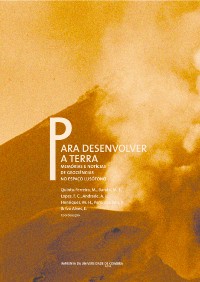Please use this identifier to cite or link to this item:
https://hdl.handle.net/10316.2/31485| Title: | Caracterização geotécnica de zonas degradadas nas margens do rio Mondego em Coimbra | Other Titles: | Geotechnical characterization of degraded river banks on the Mondego river in Coimbra | Authors: | Quinta‑Ferreira, M. Oliveira, M. A. Henriques, J. |
Keywords: | Mondego Banks;Deformations;Geotechnical Study;Margens do Mondego;Deformações;Estudo geotécnico | Issue Date: | 2012 | Publisher: | Imprensa da Universidade de Coimbra | Journal: | http://hdl.handle.net/10316.2/24404 | Abstract: | The methodology and the prospection works executed in the study and geotechnical
zoning of degraded areas of the banks of the Mondego river, between the Manuel
Braga Park and the Bridge‑weir
in Coimbra, Portugal are presented. After the definition of
the most problematic areas, a geological reconnaissance and four boreholes were done, complemented by other eleven boreholes already available. The banks are mainly constituted of
artificial ground, including pavements, tout‑venant,
heterogeneous landfills and limestone
blocks cemented with hydraulic mortar, belonging to the retaining walls of the riverbanks.
The natural ground is predominantly sandy alluvium with interbedded silty‑clay
mud,
changing in depth to gravel, pebbles and sand. Two geotechnical zones were considered in the
alluvium: one constituted by sand and mud, and the other constituted by gravel. The alluvium
of the lower zone tends to present higher strength, although the values of the SPT tests are
quite variable. The deficiencies would be caused by the consolidation of the alluvium mud
and by the settlement and low strength of the loose fills. Apresentam‑se a metodologia e os trabalhos realizados no estudo e zonamento geotécnico de zonas degradadas nas margens do rio Mondego, entre o Parque Manuel Braga e o Açude‑Ponte em Coimbra, Portugal. Após a identificação das zonas mais problemáticas, foi efetuado o reconhecimento geológico e realizadas quatro sondagens em complemento de outras onze, mais antigas. As margens são essencialmente constituídas por terrenos artificiais, que englobam pavimentos, tout‑venant, aterros heterogéneos e blocos calcários com argamassa hidráulica, que constituem os muros de suporte existentes na margem do rio. Os terrenos naturais são aluviões predominantemente arenosas com intercalações de lodo argilo‑siltoso, passando em profundidade a cascalheira, seixos e areia. Foram consideradas duas zonas geotécnicas nas aluviões: uma constituída por areias e lodos, e a outra constituída por cascalheira. A cascalheira tende a apresentar melhores condições de resistência e menor deformabilidade, embora os valores do ensaio SPT sejam muito variáveis. As deficiências observadas nos muros e diques terão sido originadas quer pela consolidação das aluviões mais finas, quer pelos assentamentos e baixa resistência dos aterros soltos. |
URI: | https://hdl.handle.net/10316.2/31485 | ISBN: | 978-989-26-0531-9 (PDF) | DOI: | 10.14195/978-989-26-0531-9_41 | Rights: | open access |
| Appears in Collections: | Para desenvolver a Terra: memórias e notícias de Geociências no espaço lusófono |
Files in This Item:
| File | Description | Size | Format | |
|---|---|---|---|---|
| 41-para_desenvolver_a_terra_artigo..pdf | 1.69 MB | Adobe PDF |  |
Items in DSpace are protected by copyright, with all rights reserved, unless otherwise indicated.
